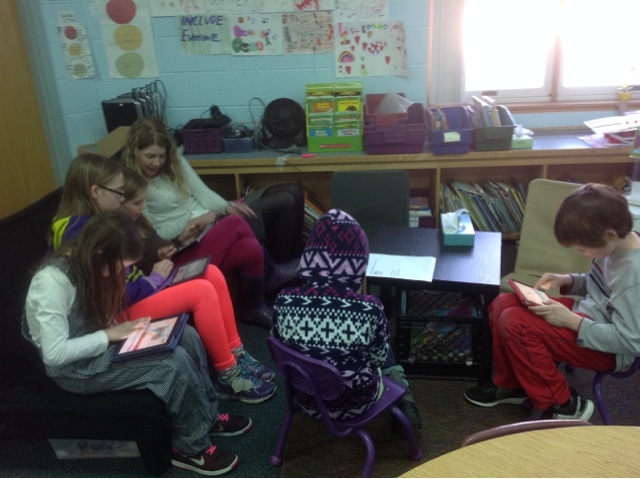What do you wonder? Is there something you really want to learn
about? Be curious, be creative....school is a place to find answers to
your questions!
School is a place to learn about things you care about
and new things you are just hearing about for the first time!
The
above is the message that I want enrichment students to receive. One of
my professional goals this year is to increase student inquiry and
exploration of their curiosity in the enrichment classroom. In an
effort to support this goal I will be working with second graders to
support student driven inquiry projects.
We
began these projects with a quick survey. I asked students to think
about whether they felt choice was important in their learning. I asked
them to think generally about the idea and then also to come up with
some examples of times they have received full choice in their learning
or no choice in their learning. This survey gave us a starting point
for our inquiry work together. In general, students felt choice was
important and had many reasons for enjoying choice in learning. A few
students mentioned that they preferred when the teacher selected their
subjects, because sometimes they had a hard time choosing themselves and
that they liked what teachers selected! Students were very reflective
in this process and it helped me to make sure that as we move forward we
consider those students that desire additional structure as well as
those that are ready to jump in! This survey also supported my original
thinking that students could benefit from inquiry projects and that
many students are frustrated with learning things they already know, or
that are in their words 'boring'.





Next I shared my process of wondering about a topic I am curious about (using robots in an educational setting). I also shared a website called Wonderopolis ( many have used this in my classroom before) so students could see a variety of 'I wonder' questions. After we discussed the importance of our ideas and curiosity, students were asked to come up with at least three 'I wonder' statements. Initially I was worried that students would struggle to come up with topics and ideas.....but I should not have been. Their ideas were amazing!

Before our next class I was able to group the wonders into bigger topics. Many student questions had themes that I could pull together. I had resources available for all of these topics. In each class we ended up with about eight to ten major topics. I challenged students to select a topic that they really wondered about and then to spend time with resources about this topic. Students were told that they could work in groups or individually to develop a question based on their topic. Some students stuck with the question they had written originally (even if it was not one of the more common themes, they could elect to continue following their own path), while others worked with the resources and a group to develop a new question that they all agreed would be worth investigating. Sometimes the resources drove their question formation, and sometimes the group discussion led to an idea. Several students changed their topic selection after the initial selection, and after seeing what some groups were learning. Students expressed some sadness in missing what others were learning about...until we had a discussion about the idea that we would all be learning from each other and sharing in the end! I took it as a great sign when students wanted assurance that they could learn something else next!!
As we close out February, we have begun using our resources to find answers to our questions. Students are reading, listening, watching and then taking notes. When we return to school in March we will begin thinking about how to share our new knowledge!
Notes for educators:
This process requires quite a bit of management and I have found several things to be helpful so far:
-A folder for each inquiry group to keep all of their information together
-Resources that can be listened to ( in particular when topics are not typical second grade reading material). My current online resources include: Pebble Go ( funded by our school library), World Book Online, Wonderopolis (free website), You tube videos (curated and reviewed by me first), online articles from Scholastic and Highlights that include a text read aloud feature.
-Lots of books from the school library to spark questions and ideas AND to help find answers.
-Writing notes from the teacher to each group about what they should consider doing for their next task. This allows me to meet with small groups, and limits the number of students who have trouble self starting at the beginning of each class.
































